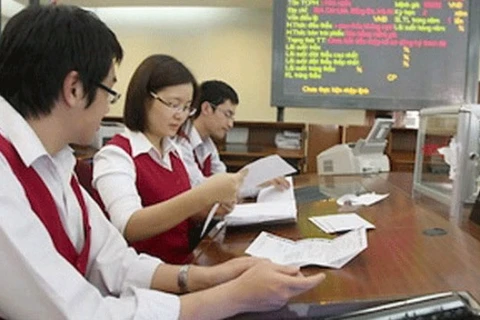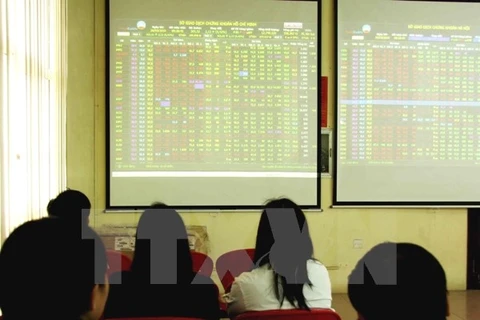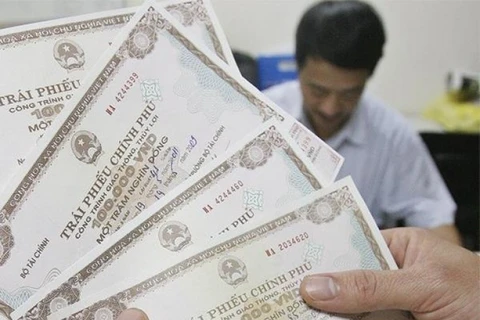Hanoi (VNA) – Trading liquidity of the Government bond market may increase once the State Treasury of Vietnam is able to buy and sell bonds, a State Securities Commission (SSC) official said.
The State Treasury will be able to buy and sell Government bonds (G-bonds) when Circular 10/2017/TT-BTC, which was issued by the finance ministry in early February 2017 to amend an older legal policy on the bond trading market, takes effect on September 1, 2017.
Ta Thanh Binh, head of the market development department at SSC, said the function of the State Treasury under the new Circular complies with Decree 24/2016/NĐ-CP issued in April 2016.
The decree allows the State treasury to buy back G-bonds, local-authority bonds and Government-backed bonds with maximum maturity of three months to make the best use of temporary idle State budget and provide funding for local governments to implement their socio-economic development projects.
Once the State Treasury is able to participate in bond trading, the market will definitely improve its trading liquidity because the treasury is not only an issuer, but also a huge investor.
The treasury will buy bonds during low-demand sessions and sell bonds during low-supply sessions to balance market trading and increase liquidity.
The total value of Vietnam’s bond market is quite small compared to the country’s GDP. In 2016, total scale of the bond market was only 36.9 percent of the total GDP, although Vietnam recorded G-bonds worth 281.75 trillion VND (12.52 billion USD), exceeding the whole year’s plan by 12.7 percent.
Trading liquidity of the secondary bond market was quite impressive in 2016, with the average trading value reaching 6.28 trillion VND in each session, an increase of 72 percent from 2015’s average. However, that value is quite low compared with other economies in the region.
“The new decision will also help improve conditions of the repo (repurchase agreement) market as an investor can combine two ordinary sells and buy orders at the same time with a partner from September 1 onwards. This trading mechanism has been conducted in the global securities market for a long time,” Binh said.
The risks that the bond market may suffer from short-selling of bond notes will be reduced, according to Binh.
“Basically, selling G-bonds can only be done when the seller has a sufficient amount of G-bond notes to sell on settlement day.”
“The G-bonds that are available for transfer should be already available in the seller’s depository account on settlement day or the seller should receive those G-bonds either before or on settlement day from the previous trading or borrowing order.”
To minimise potential risks, the finance ministry regulates that only market members that are eligible to auction G-bonds can borrow G-bonds for selling and the lending term must not exceed 180 days, she said.
The sides involved in the transaction must negotiate and are responsible for related terms such as trading volume, guaranteed assets and bond yield rate, she added.
“We deploy short-selling activity on the bond market before the stock market because members of the bond market are well-organised, well-administrated and are financially creditable.”
“The bond-lending mechanism should be conducted carefully, and after a period of implementation, we will summarise the work and consider deploying it for stocks and other derivative products.”
“The government has targeted developing the G-bond market as a standard for the country’s financial market and the core to improve the bond market.”
“To achieve this target, we need to improve and complete the legal system, assist the market, develop the mechanism on market intermediaries and diversify products to attract more investors.” -VNA
VNA

























